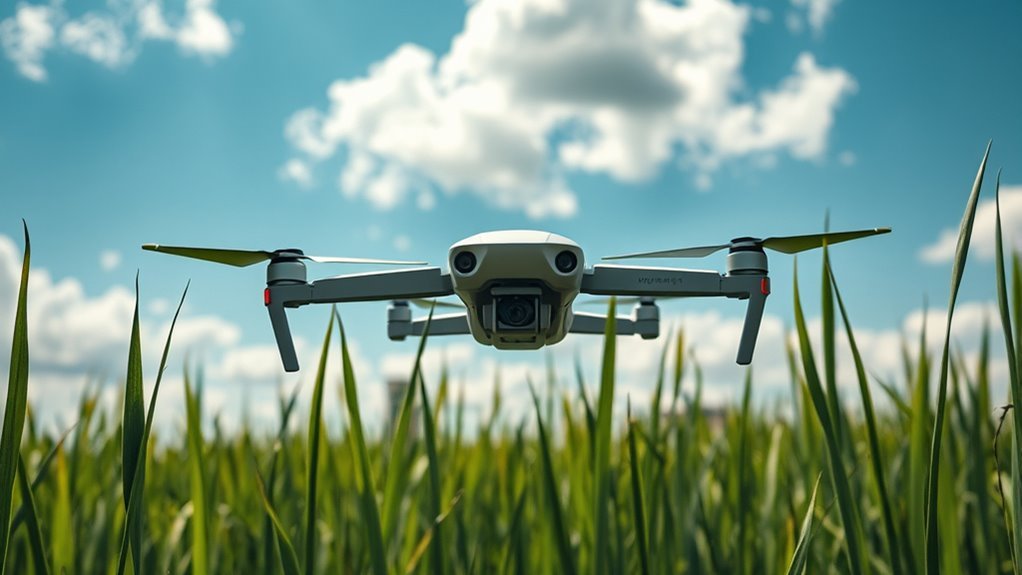If you’re seeking reliable drone stability and tonal precision, Canning Drone Reeds offer engineered airflow control and balanced resistance for consistent pitch and volume. Made from precision-cut cane or synthetics, they provide durability and clear tonality while fitting various bagpipe models with proper measurement and adjustment. Their meticulous design minimizes vibrations and air leaks, enhancing your performance. For insights on installation, maintenance, and cost-effectiveness, keep exploring what makes these reeds a preferred choice.
What Are Canning Drone Reeds?

Canning drone reeds are specialized components used in bagpipes to produce the continuous, steady drone sound that supports the melody. When you choose these reeds, you’re selecting from a range of reed types engineered for stability and tonal consistency. Unlike chanter reeds, drone reeds must maintain a constant pitch and volume, allowing you the freedom to focus on musical expression without worrying about tuning fluctuations. The precision in their design guarantees that the reed vibrates steadily, minimizing interruptions in the drone sound. By understanding the specific construction and material properties of Canning drone reeds, you can better appreciate how their performance characteristics differ from other reed types, giving you greater control over your instrument’s foundational sound.
Key Features and Specifications

Understanding the construction and function of drone reeds sets the stage for examining their specific features and technical specifications. Canning drone reeds utilize advanced reeds technology designed to optimize airflow and response, resulting in consistent pitch stability. Their precision-cut cane or synthetic materials guarantee durability without compromising flexibility. You’ll find that the reeds offer a balanced resistance level, allowing for effortless control, which is critical for maintaining drone tuning. Sound quality is enhanced through meticulous crafting processes that reduce unwanted vibrations and produce a clear, rich tone. Additionally, these reeds feature standardized dimensions, guaranteeing compatibility across various drone chanters. When you choose Canning drone reeds, you’re equipped with components engineered for reliability and superior acoustic performance, empowering you to achieve the freedom of expression you seek in drone playing.
Benefits of Using Canning Drone Reeds

Although drone reeds may seem like a small component, selecting high-quality ones greatly impacts your instrument’s tonal consistency and playability. Canning drone reeds are engineered to enhance sound quality by providing a stable, clear, and balanced tone that remains consistent across extended play sessions. Their precise craftsmanship reduces unwanted vibrations and tonal fluctuations, giving you greater control and freedom in your performance. Additionally, these reeds offer superior drone longevity due to their durable materials and design, which resist wear and maintain tuning integrity over time. For you, this means less frequent replacements and sustained reliability, allowing uninterrupted artistic expression. Ultimately, choosing Canning drone reeds optimizes your drone’s performance by combining technical excellence with extended durability, empowering you to achieve both freedom and precision in your music.
Installation Process and Compatibility
When installing drone reeds, you’ll want to verify compatibility with your specific bagpipe model to maintain peak performance. Compatibility issues can arise from reed dimensions, tuning range, and material properties. To guarantee a smooth installation, consider these installation tips:Ensure your drone reeds fit your bagpipe model to avoid tuning and performance issues.
- Measure your drone stock diameter precisely before purchase
- Check reed length and adjust if necessary using fine sanding
- Test reed seating to avoid air leaks and guarantee airtight fit
- Use a tuning slide or drone stock adjustments to accommodate reed stiffness
- Avoid forcing reeds into incompatible stocks to prevent damage
Performance Comparison With Standard Reeds
Since drone reeds directly influence tonal quality and stability, comparing Canning drone reeds with standard options reveals distinct performance characteristics. You’ll notice Canning reeds deliver superior tonal consistency, maintaining stable pitch across varying environmental conditions. Their engineered precision results in enhanced sound quality, producing a richer, more resonant drone tone without unwanted fluctuations. Standard reeds often exhibit variability in response, leading to minor pitch instability and less uniform timbre. If you seek freedom in your playing, Canning’s reeds provide reliable performance, allowing you to focus on expression rather than reed management. The refined manufacturing tolerances in Canning reeds minimize the need for frequent adjustments, ensuring consistent output and a smoother playing experience compared to conventional reeds. This technical advantage makes Canning reeds a preferred choice for serious players prioritizing tonal integrity.
Durability and Maintenance Tips
Three key factors determine the durability of Canning drone reeds: material quality, construction precision, and environmental exposure. Rigorous durability testing confirms their resilience, but you’ll extend their lifespan with a consistent maintenance routine. Focus on these essentials:
- Store reeds in a controlled, low-humidity environment to prevent warping.
- Regularly inspect for micro-cracks or corrosion that impair performance.
- Clean with a soft brush to remove debris without damaging the surface.
- Avoid extreme temperature fluctuations which weaken structural integrity.
- Replace reeds promptly once tonal degradation is detected to maintain sound freedom.
Customer Reviews and Feedback
You’ll find that customer feedback on Canning Drone Reeds highlights specific performance strengths and recurring issues. Users consistently praise their tonal clarity and responsiveness, while common complaints focus on durability under heavy use. Analyzing these insights helps you understand how the reeds perform in practical scenarios.
User Experience Highlights
How do users perceive the performance and reliability of Canning Drone Reeds in real-world applications? The user experience consistently highlights high user satisfaction due to precise tonal control and durability under varied conditions. You’ll find the reeds maintain stability, supporting a freer, more expressive playing style. Key points from feedback include:
- Consistent pitch accuracy enabling confident performance
- Durable materials resisting warping over time
- Responsive dynamics facilitating nuanced expression
- Reliable tuning with minimal adjustment needed
- Smooth break-in period enhancing immediate usability
This analytical insight indicates that these reeds effectively balance technical precision with the freedom you seek in musical expression, making them a dependable choice for players prioritizing both control and creative liberty.
Common Praise and Complaints
Building on the positive aspects of performance and reliability, customer reviews provide deeper insight into specific strengths and occasional drawbacks of Canning Drone Reeds. User feedback consistently highlights exceptional sound quality, noting a rich, stable drone that supports extended play without tonal degradation. Many appreciate the reeds’ responsiveness, allowing nuanced control and freedom in expression. However, some users report variability in reed longevity, with occasional reeds requiring early replacement, which may affect consistent performance during extended sessions. Additionally, a minority mention sensitivity to environmental conditions, impacting tuning stability. Understanding these patterns helps you anticipate maintenance needs and optimize reed selection for your playing style. Overall, the balanced user feedback underscores the reeds’ capacity to deliver high-caliber sound quality while suggesting areas for cautious evaluation.
Pricing and Where to Buy
Where can you find the Canning Drone Reeds and what should you expect to pay? Understanding the pricing options and purchase locations is key to making an informed choice. These reeds are available through several specialized outlets, each offering varied prices depending on quality and quantity.
- Authorized music stores with expert staff
- Online marketplaces with competitive pricing
- Direct from the manufacturer for bulk deals
- Specialty bagpipe shops guaranteeing authentic products
- Local artisan vendors offering handcrafted options
Pricing typically ranges from moderate to premium, reflecting craftsmanship and materials. You’ll want to compare these purchase locations carefully to secure the best value without compromising on quality. This approach guarantees you maintain freedom in your musical expression while investing wisely.

